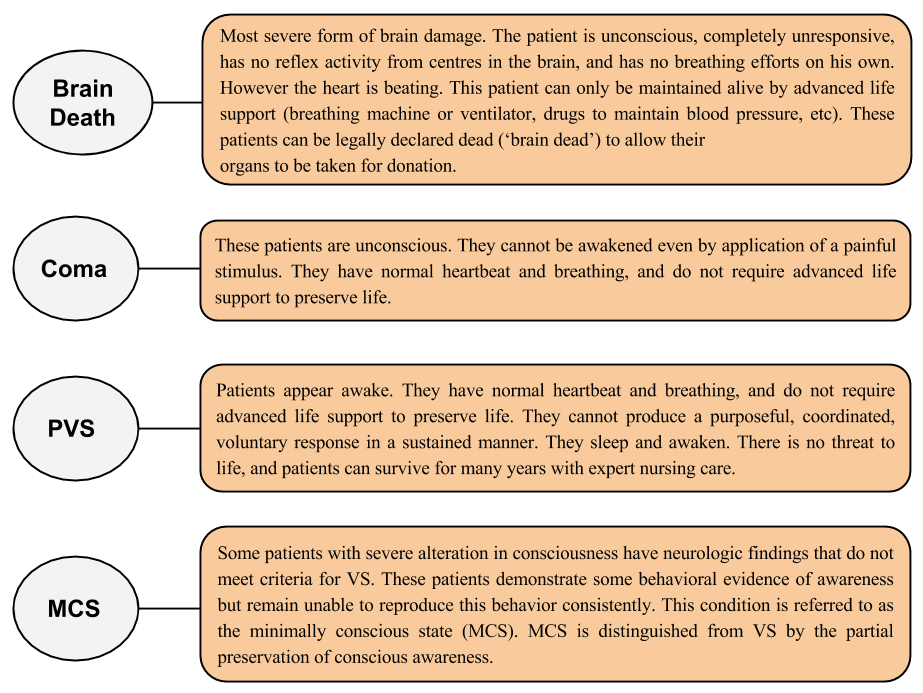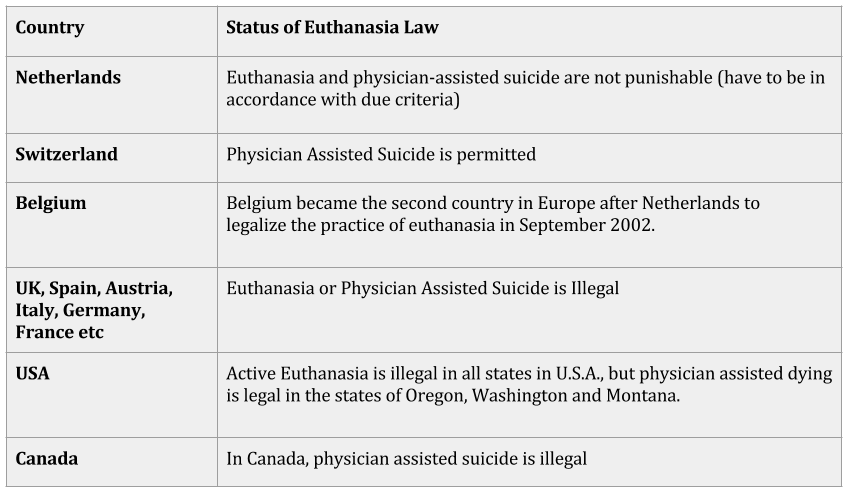[orc]A Constitution bench of the Supreme Court has now held that ‘Passive Euthanasia’ & ‘Living Will’ are permissible. In 2011, a two judge bench of the Supreme Court discussed about passive euthanasia in the case of Aruna Shanbaug. She breathed her last at Mumbai’s KEM hospital after being in a Vegetative state for over 40 years, after a brutal attack in 1973. Her name has been synonymous with the Euthanasia debate in India
A Constitution bench of the Supreme Court has now held that ‘Passive Euthanasia’ & ‘Living Will’ are permissible. In 2011, a two judge bench of the Supreme Court discussed about passive euthanasia in the case of Aruna Shanbaug.
Aruna Ramachandra Shanbaug finally breathed her last in May 2015, after being in a Permanent Vegetative State (PVS) for over 40 years. She has been in the King Edward Memorial Hospital (KEM) for the last 40 years where the doctors & nursing staff took exemplary care. Ever since, her name has become synonymous with the debate over the controversial issue of Euthanasia (Mercy Killing). There was no law in India that allows Euthanasia and Aruna’s case prompted the Supreme Court to examine this issue in detail when one Ms. Pinki Virani filed a writ petition in the Supreme Court with the prayer to stop feeding Aruna and let her die peacefully. The court passed a historic judgement in March 2011 allowing Passive Euthanasia (with guidelines). The Judgment is a master piece to understand the various facets of this controversial issue and also to understand the medical terminology associated with such patients. Here is an attempt to summarise that judgement.
The Incident in 1973
Aruna was a staff Nurse working in King Edward Memorial Hospital(KEM), Parel, Mumbai. On the evening of 27th November, 1973 she was attacked by a sweeper in the hospital who wrapped a dog chain around her neck and yanked her back with it. He tried to rape her but finding that she was menstruating, he sodomized her. To immobilize her during this act he twisted the chain around her neck. The next day on 28th November, 1973 at 7.45 AM, a cleaner found her lying on the floor with blood all over in an unconscious condition. It is alleged that due to strangulation by the dog chain the supply of oxygen to the brain stopped and the brain got damaged. This caused an irreparable damage to her brain and pushed her into a Permanent Vegetative State (PVS).
Her close relatives and her fiancée abandoned her after a few years. Since then, it is the staff of the KEM hospital that has been taking exemplary care of their colleague. They have been family to her for the last 40 years and treat her one among them. The fact that she did not develop a single bed-sore though she is on the bed for such a long time is a testimony to their service.
The Writ Petition in Supreme Court
In 2009, one Ms. Pinki Virani of Mumbai filed a writ petition in the Supreme Court claiming to be Aruna’s next friend. (In legal parlance, a next friend is a person who represents another person who is under disability and unable to decide for himself/herself and who has no legal guardian). In her petition, she said that Aruna cannot be said to be a living person and it is only on account of mashed food which is put into her mouth that there is a facade of life which is totally devoid of any human element. She also said that, there is no possibility of any improvement in her condition and her body lies on the bed in the KEM Hospital like a dead animal, and this has been the position for the last 36 years. She prayed that the KEM hospital authorities be directed to stop feeding Aruna, and let her die peacefully.
It is also to be noted that the court accepted this petition under article 32 of the Indian Constitution. This is unusual since for any case to be accepted under this article, the petitioner has to show the violation of any of her fundamental right. The court said, that in view of the importance of the issues involved, they decided to go deeper into the merits of the case.
The court also issued a notice to the Dean, KEM Hospital. Dr. Amar Ramaji Pazare, Professor and Head in KEM hospital, stated in his submission that Aruna accepts the food in normal course and responds by facial expressions. He also said that Aruna responds to commands intermittently by making sounds. His submission was at variance with the submission of the petitioner. Hence the court decided to appoint a three member committee comprising of well-known doctors to look into Aruna’s case history, examine her and then submit a report to the court.
The Doctors Committee Report
The doctors committee did detailed investigation by going through Aruna’s case history and by doing fresh tests. They concluded that Aruna has developed non-progressive but irreversible brain damage. They said most authorities consider a period exceeding 4 weeks in this condition, as confirming irreversibility. They also said Aruna could perhaps be the longest survivor in this situation.
They also said that she meets most of the criteria for being in a permanent vegetative state (PVS). After being asked by the court to explain the medical terminology in simple words, the committee described four different situations and concluded that Aruna’s condition matches with that of being in a PVS. Those four conditions are
The counsel for Ms. Pinky Virani referred to the 241st report of the Law Commission of India, 2006 on ‘Euthanasia’. The Attorney General of India on the other hand stated that the report of the Law Commission of India has not been accepted by the Government of India. He further submitted that Indian society is emotional and care-oriented and that we do not send our parents to old age homes, as it happens in the West. He stated that there was a great danger in permitting euthanasia that the relatives of a person may conspire with doctors and get him killed to inherit his property. He further stated that tomorrow there may be a cure to a medical state perceived as incurable today. The Government was against the idea of Euthanasia, whether active or passive.
The court was primarily considering this issue as the one to decide between ‘Active Vs Passive Euthanasia’. The court also held that it is the KEM hospital staff, who have been amazingly caring for Aruna day and night for so many long years, who really are her next friends, and not Ms. Pinky Virani who has only visited her on few occasions and written a book on her.
Active Vs Passive Euthanasia
The court held that active euthanasia is a crime all over the world except where permitted by legislation. In India active euthanasia is illegal and a crime under section 302 or at least section 304 IPC. Physician assisted suicide is a crime under section 306 IPC (abetment to suicide).
Active euthanasia is taking specific steps to cause the patient’s death, such as injecting the patient with some lethal substance, e.g. sodium pentothal which causes a person deep sleep in a few seconds, and the person instantaneously and painlessly dies in this deep sleep.
The court also observed the difference between euthanasia and physician assisted dying, the difference being in who administers the lethal medication. In euthanasia, a physician or third party administers it, while in physician assisted suicide it is the patient himself who does it, though on the advice of the doctor. In many countries, physician assisted dying is legal while the physician administering it is illegal.
The difference between “active” and “passive” euthanasia is that in active euthanasia, something is done to end the patient’s life’ while in passive euthanasia, something is not done that would have preserved the patient’s life.
The court said that in ‘Passive Euthanasia”, the doctors are not actively killing anyone; they are simply not saving him. It said that, while we usually applaud someone who saves another person’s life, we do not normally condemn someone for failing to do so.
International Experience
The court relied on Euthanasia laws in various countries to understand the international experience.
The Judgment
For the judgment, the court relied heavily on the Airedale case decided by the House of Lords in the U.K. where the court allowed Passive Euthanasia only after the approval of a high court.
The court also said that Aruna is not brain dead, but at the same time there is little possibility of her coming out the PVS. While allowing Passive Euthanasia, the court said it is for the KEM hospital staff to take the decision whether Passive Euthanasia should be allowed in Aruna’s case. This has been done in recognition of the KEM hospital staff as the next friend of Aruna. The KEM hospital staff has clearly expressed their wish that Aruna should be allowed to live. Hence Aruna was allowed to live till her death by natural means.
While allowing Passive Euthanasia, the court laid down important guidelines to prevent any misuse of the provision and that these guidelines have to be followed in every such case till legislation is made by the Government. The guidelines to be followed in such cases are
- Any petition for Passive Euthanasia has to be filed with the relevant high court. The Chief Justice of the High Court should constitute a Bench of at least two Judges who should decide to grant approval or not.
- Before taking a decision, the bench should seek the opinion of a committee of three reputed doctors to be nominated by the bench. Preferably, one of the three doctors should be a neurologist; one should be a psychiatrist, and the third a physician.
- The High Court Bench should issue notice to the State and close relatives e.g. parents, spouse, brothers/sisters etc. of the patient, and in their absence, the next friend.
- The Court should supply a copy of the report of the doctor’s committee to them as soon as it is available.
- After hearing all the parties, the High Court bench should give its verdict.
- The High Court should give its decision at the earliest.
Appreciation for KEM Staff
The court had special words of appreciation for the KEM Staff for their dedication all these years.
The Judgement also quoted Mirza Ghalib that depicts the human condition when faced with such a dilemma like Euthanasia where you die waiting for death that never comes.









3 Comments
Pingback: Draft Bill on Euthanasia in India out for Public Comments - LegalParley
Pingback: NATURAL LAW AND RIGHT TO DIE – Site Title
Pingback: NATURAL LAW AND RIGHT TO DIE – Site Title